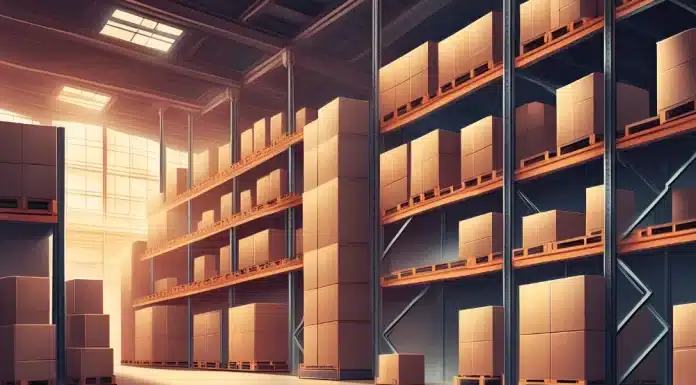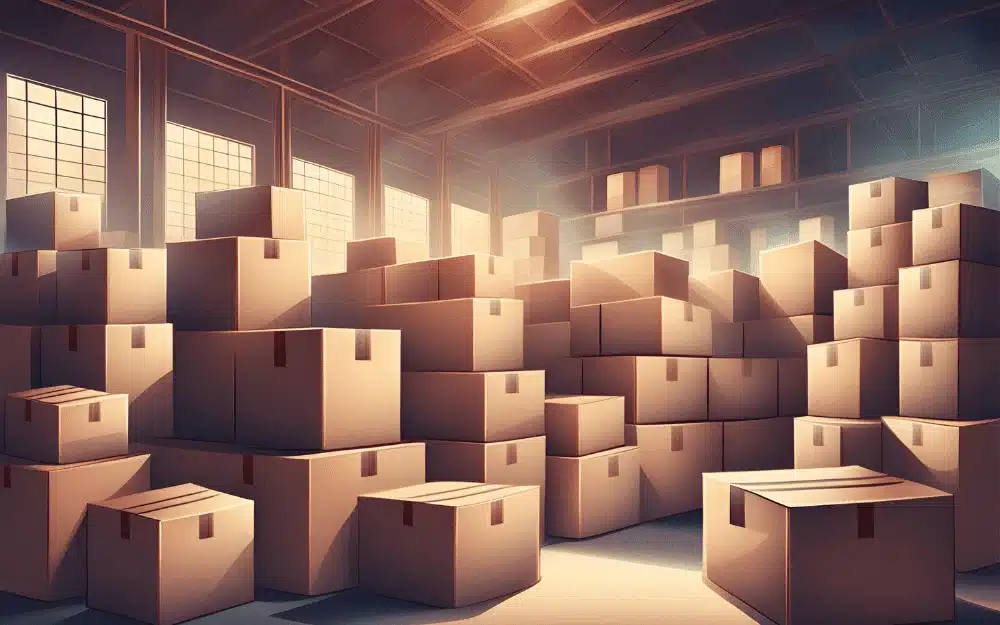Have you thought about the big improvements a Warehouse Management System (WMS) can bring? This software lets businesses track their products from start to finish. It helps make operations smoother, cuts costs, and boosts overall efficiency.
Imagine maximizing warehouse space, lowering expenses, and managing stock more effectively. A WMS enhances demand forecasting, provides clear inventory insights, and streamlines supply chain management for smarter operations.
Looking for a reliable solution? HashMicro’s Warehouse Management System offers customizable features to meet your needs, ensuring better control and productivity. Let’s explore the top 15 benefits of WMS for Philippine businesses!
Table of Contents
Key Takeaways
|
1. Space Optimization
Efficiently managing a warehouse is all about using space well. The Best warehouse management system (WMS) is key here. It helps you use your floor space better. This means you can store things more effectively and make the most of your warehouse’s capacity.
A WMS looks at your floor space, considering tasks and material types. It then figures out the best way to use each space. By using space smartly, you cut down on wasted area. This makes finding products faster and your operations more efficient.
The WMS points out the best spots to store different items. It takes into account things like temperature needs and item safety. Allocating space carefully helps your warehouse run smoother. It makes sure products get moved around the right way, which improves how you manage stock.
Using space wisely can also save you money on moving materials. A better set-up means less walking and handling for your workers. This saves on labor and equipment costs. Plus, it boosts how much work you get done.
In the end, the right warehouse management system can transform how you use space. It makes storing and finding items easier. This leads to a more efficient warehouse that works better for everyone.
2. Reduce Operation Cost
Adding a warehouse management system (WMS) can make a big dent in operation costs. It boosts how well things run and uses labor smarter, cutting back on extra work and shrinkings costs. The WMS does jobs like tracking inventory and filling orders on its own, making fewer mistakes and boosting work.
A WMS can lower how much money you spend on keeping inventory. It keeps an eye on stock levels in real time and manages how you restock. This means you can guess right about what you’ll need and when to reorder, avoiding having too much or not enough stuff. This cuts down on costs for keeping items and items going bad.
It also makes it easy to use Just-in-Time (JIT) inventory, which keeps stock levels low to save on space. This system helps make sure every inch of the warehouse is used well, cutting costs even more.
By putting a warehouse management system in place, companies can work more efficiently, use resources better, and cut their operation costs.
3. Maximize Stock Control
Good stock control is key for running a warehouse smoothly. A warehouse management system gives a clear view of what’s in stock at any time. This lets you watch your stock closely, avoiding having too much or too little. It helps with planning what your customers may need and keeps your inventory at the right level for their orders.
With a warehouse management system, keeping an eye on your stock is easy. You can track where items move in the warehouse, making sure you know what you have. This knowledge helps you manage your stock better based on facts, not guesses.
Managing inventory well is important to keep balanced amounts of stock. A warehouse management system helps you watch your stock and spot items that aren’t selling or are too old. It also lets you make sure you never run out of what your customers are looking for.
Plus, a warehouse management system helps guess better what your customers will want. It looks at past sales and what you have in stock now. With this info, you can make sure to have what’s needed, when it’s needed. This keeps customers happy and prevents items from selling out.
4. Improve Demand Forecasting
A warehouse management system helps warehouses plan better for the future. It uses advanced analysis to spot trends in demand. This helps in making smart choices about how much stock to have and run things more smoothly.
It looks at the past and what’s happening now to guess what we’ll need in the future. This means less money spent on keeping too much stock and a lower risk of running out of things.
Knowing what customers want and what’s popular helps keep the right amount of stock. This makes sure customers can get what they need when they need it. It also means less rushing around to ship things quickly.
Good planning helps warehouses use their resources better. It means they can make their products when needed and not have too much or too little. This cuts costs and makes managing stock much easier.
In the end, a good warehouse system does a lot. It helps predict the future, keeps stock at the right level, and makes everything work better. By using what we know about future demand, warehouses can make choices that are good for both customers and their budgets.
5. Inventory Visibility
Keeping track of inventory is key for a warehouse to run smoothly. Without seeing clearly how much stock is on hand, a warehouse might have trouble finding items, knowing what’s in stock, or sending out orders easily. This is where a warehouse management system (WMS) steps in to help.
A warehouse management system gives a full view of what’s on the shelves right now. It uses tools like RFID, barcodes, and tracking to keep a reliable eye on everything. By working with ERP software, it can predict needs ahead of time and tell us how well products are doing.
This system helps cut down on late orders by letting us see, in real time, what we have. If there’s a mistake or something’s not quite right, it can be fixed fast.
Total stock accuracy is also very important for running a warehouse well. With a WMS, the chance of items going missing or getting lost is much lower. This means no more long searches in the warehouse. Plus, the system keeps track of everything, so the count is always right.
Getting the inventory spot on is great for keeping customers happy, too. Knowing exactly what we have, when we have it, means we can tell our customers the truth about when we can deliver. This stops people being let down by things being out of stock or orders taking too long. It builds trust and loyalty, making the warehouse a trusted part of the supply chain.
A good WMS helps warehouses work better, with less mistakes, and smarter processes. By knowing exactly what’s happening with the inventory at any time, a business can plan better, work smoother, and keep the whole supply chain running well.
To discover the best warehouse management system solution for your business. Explore the HashMicro ERP software by clicking the banner below.
6. Optimized Supply Chain
A warehouse management system is key in making warehouse work better and improving the entire supply chain. It smooths the path from getting goods in to sending them out, making the whole process work better. This leads to a more effective supply chain, helping companies do their best work.
It works by improving how information and work flows, cutting out extra steps and making shipments quick and accurate. With this system, companies do business better. They save time and money, and everyone involved in the supply chain wins.
By using a warehouse management system, you boost trust in your supply chain and the service you offer customers. It makes working with suppliers, customers, and shipping companies easier. This means deliveries are on time and right. That makes customers happy and gives you an edge in the market.
To see how a warehouse management system improves the supply chain, check out the diagram below:
7. Barcode and RFID Automation
A warehouse management system can see big gains by adding barcode and RFID tech. It makes tracking automated and improves the supply chain’s efficiency. With advanced scanning and RFID, warehouses follow products from start to finish. This reduces mistakes, boosts inventory accuracy, and speeds up work.
Barcodes help scan product details fast and accurately. This allows for smooth tracking and handling of inventory. Warehouses can quickly update stock levels, making sure they know where items are.
RFID takes tracking even further, using radio waves to follow and watch over items. Tags on products or packages send data over a distance. This removes the need for up-close scanning and improves tracking quality. It helps warehouses watch over moving inventory, make picking and sending-out smoother, and cut down on mistakes.
With barcode and RFID, tracking items is no longer a manual task requiring lots of time. The system swiftly records and updates inventory data. This lets workers focus on more important tasks and cuts down on errors.
Barcodes and RFID also help create detailed reports on stock, item movement, and more. These reports give valuable info for making choices. They help warehouses do better at planning, make smarter moves fast, and keep up with real-time info.
To sum up, barcode and RFID tech are key for well-run warehouses. They offer accurate tracking and smooth processes. This boosts productivity, enables live tracking and reporting, keeping warehouses working at their best.
8. Improve Security
A warehouse management system is key for better security in your warehouse. It uses advanced features to keep your items, data, and the warehouse safe.
It requires a unique user ID for every operation. This makes sure we know who did every action, which makes it harder for theft or fraud to happen.
This system also automatically records every move and change made. It keeps a detailed record of all warehouse activities. This record helps find and stop any security risks.
It stops people from seeing important data unless they should. Only those allowed can access customer or inventory info. Keeping this data safe means your customers and business are safe too.
Thanks to a warehouse management system, everything is more secure. It blocks threats and keeps your warehouse, items, and information safe. You can relax, knowing your business is protected.
9. Efficient Shipping Management
Warehouse management systems play a big role in making shipping faster and better. They help warehouses ship orders on time and safely. This makes customers happier and more trusting.
These systems look at how much stock there is, what orders need to go out first, and where they need to be delivered. Doing this by hand would be slow. But with these systems, everything happens much faster and smarter.
They also work well with transport systems. This means everyone knows where the deliveries are at any given time. It helps the warehouse and shipping companies work better together.
One big plus of these systems is keeping very accurate track of stock. This means products are always ready to go. Warehouses know what they have and where it is. So, they can quickly pick the goods needed for each order.
Shipping systems can even suggest the best way to pack items so they arrive safely. This reduces mistakes and keeps the items in top shape.
Thanks to these efficient systems, warehouses can make their customers really happy. They get their orders quickly and know exactly when to expect them. This builds strong trust between the warehouse and the people they serve.
10. Better FEFO and FIFO Implementation
A warehouse management system (WMS) is key to using FEFO and FIFO well. These methods are for keeping products fresh and not outdated.
The WMS includes tools like lot and batch numbers for careful inventory handling. This ensures products don’t go to waste. It also makes sure customers are happy with their items, meeting the best standards.
FEFO helps sell items in order of their expiration. The oldest products are sold first, lessening expired items’ risk. This means people get fresh, top-quality goods, making them trust the brand more.
FIFO is about handling products in the order they arrived. This reduces how much money is tied up in stock and makes inventory updates better. It also prevents old products from piling up.
Using FEFO and FIFO well is vital. It keeps stock moving and fresh, avoiding big losses. A good WMS makes it easier. This way, warehouses can handle stock better and deliver the best to customers.
11. Flexible Access
Warehouse management systems allow easy access for managing warehouses from anywhere. With a WMS, you can check important data and do tasks at any time, wherever you are. This is thanks to the mobile features and being based in the cloud.
This easy access helps make work more productive and quickens decision-making. You can watch over your warehouse, no matter if you’re there or not. It lets you solve problems fast or make key choices, ensuring your warehouse runs smoothly.
Thanks to a WMS’s mobile features, you don’t need to be at the warehouse to see what’s happening. Your phone can be your window to real-time data, inventory checks, shipment tracking, and team communication.
Also, the fact that WMSs are cloud-based lets you work from home but still keep an eye on the warehouse. You can securely log in and do tasks from any device with internet. This means you can work away from the warehouse without losing touch or control.
12. Enhance Customer Service
Warehouse management systems are key in making customer service better. They do this by improving how orders are filled. They also make sure products are right and give real-time updates to customers.
By tracking inventory accurately, warehouses make sure the right products are in stock when needed. This cuts down the time it takes to process orders. It also means fewer delivery delays. Better order fulfillment and quicker, more accurate delivery of products are the results.
Efficient processes and good shipping management help ship items on time and correctly. This makes customers happier. They know they will get their orders without mistakes. This builds trust and loyalty.
Furthermore, the system’s updates keep customers informed about their orders. They can watch their orders move and see when they will be delivered. This kind of clear info and communication makes customers more satisfied and trusting of the brand.
Warehouse management systems greatly improve customer service. They make order fulfillment better, accuracy higher, and keep customers updated. Using these systems helps businesses give their customers a great experience. This leads to more satisfied customers, return business, and a strong brand reputation.
13. Improve Labor Productivity
A warehouse management system is key to making work faster and better. It makes sure jobs are given to the right people at the best time. This means less walking around the warehouse and more work getting done. It boosts how much we can get done with our time a lot.
Also, this system helps plan work and picking accurately. It can guess how much work we’ll need to do in the future. So, warehouses can plan when to have more or fewer workers. This stops us from having too many or too few people at work. It helps us work better and keeps the warehouse running smoothly.
All this planning and smart job giving saves money and makes the warehouse run better. By making sure everyone works hard, we can please customers more without spending a lot. It helps keep the warehouse a top place to work and do business.
14. Accurate Tracking and Reporting
Warehouse management systems help keep things running smoothly by providing accurate tracking and reporting. They use real-time data analytics and performance metrics. This means they record everything that happens and let us take a good look at how the warehouse works. Using this info, we can spot problems, keep an eye on how things are going, and choose what to fix to make the job better.
This tracking and reporting system isn’t just about numbers. It actually makes everything run better. By looking at real-time data analytics, warehouses can keep track of products, check how much stock they have, and find ways to do things better. Plus, with performance metrics, warehouse bosses can look at important things like how fast orders are filled, how accurate picks are, and how quickly things get shipped. This info helps make smart choices that improve how the warehouse works.
15. Eliminate Manual Processes
Manual work in managing warehouses is slow and often mistakenly. A warehouse management system (WMS) can cut out these manual steps. It makes everything flow better.
Using automation can make workflows better. This means less work for people to do by hand. It makes things work smoother and cuts down on errors.
Barcodes are key to stopping manual work. They help track and find items easily. Plus, using barcodes ends the need to type in info by hand, lowering mistakes.
Warehouses also use robots and AI to help with repetitive jobs. They do things like sorting items, adding to stock, and processing orders. This lets people do jobs that need more thinking.
Automation doesn’t just make things run better. It also cuts costs. By getting rid of manual steps, you use your people better. This means fewer errors, less fixing, and more money saved.
With less manual work, everything in your warehouse runs smoother. Getting things done faster keeps customers happy. It also helps you win in a competitive market.
Conclusion
Implementing a warehouse management system (WMS) can greatly help your business. It brings many benefits like better use of space, improved work efficiency, and happier customers. Also, it gets rid of manual work. With a WMS, you can make things run smoother, save money, and work more effectively.
Using a WMS means you can use your warehouse space better. This cuts down on costs and manages your stock better. You’ll know what’s in your warehouse more accurately. This system helps you make smart choices without making mistakes.
Think about getting HashMicro WMS to take your warehouse and supply chain to the next level. With complete features and modules, you can customize your software according to your priorities and enhance your warehouse management. Try the free demo now!

FAQ about Benefits of Warehouse Management System
-
What is a warehouse management system?
A warehouse management system (WMS) is a software solution designed to optimize and manage warehouse operations. It helps in tracking inventory, managing storage locations, and streamlining order fulfillment processes. By automating these tasks, a WMS improves accuracy, efficiency, and overall productivity within the warehouse.
-
What is the main function of warehouse management?
The main function of warehouse management is to ensure the efficient handling, storage, and movement of goods within a warehouse. This includes managing inventory levels, optimizing storage space, and overseeing order processing to meet customer demands. Effective warehouse management contributes to reducing operational costs and improving service levels.
-
What is the importance of a warehouse in an organization?
A warehouse is crucial for an organization as it serves as the central hub for storing inventory and facilitating order fulfillment. It helps in managing supply chain logistics, reducing lead times, and ensuring that products are readily available to meet customer demands. A well-organized warehouse contributes to operational efficiency and overall business success.
-
What are the 5 ways of improving the efficiency of a warehouse?
1. Implementing Automation: Use technology such as barcode scanners and automated storage systems to speed up processes and reduce errors.
2. Optimizing Layout: Design the warehouse layout to minimize travel time and enhance workflow efficiency.
3. Regular Inventory Audits: Conduct frequent inventory checks to ensure accurate stock levels and prevent discrepancies.
4. Staff Training: Invest in training for warehouse staff to improve their skills and ensure they are proficient in using the latest tools and technologies.
5. Utilizing Data Analytics: Leverage data analytics to identify trends, forecast demand, and make informed decisions to optimize operations.



























